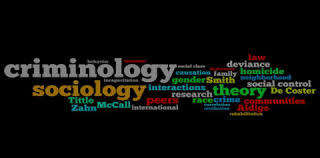Introduction
In this present era with various leadership approaches available, Leadership is an important individual trait that helps the people to become successful, personally and professionally. Development of the effective leadership abilities and skills assist the individuals in enhancing positive individual growth in the personal life as well as professional life. Effective adoption of justified and appropriate leadership style can build effective decision-making capabilities within an individual, which will help to become a successful leader shortly.
This is a vital fact to state that the consideration of the leadership capabilities can add effective value in the personal life of an individual. It will enhance an effective life experience, which can assist the particular individual to implement the experience and skills in near future in the decision making process. It is a process of development of successful and skilled leaders.
Most importantly, every individual needs to adopt adequate leadership skills to become successful in the professional career as adequate leadership approaches can help to get effective social recognition. Moreover, the implication of the appropriate leadership styles can also assist an individual to attract the followers within the society. This essay will provide an in-detailed discussion on how the course in leadership can add value to the life experience of the individuals as preparation for leadership.
Discussion
Leadership and ethics are directly related to each other. All the future professionals and present job seekers want to become a successful professional in the individual life. In this particular process, all the individuals need to adopt some particular leadership styles and approaches. It is acceptable that the adoption and application of the leadership approach always depend upon the behavioral traits and personality of the individuals.
It is true that the behavioral traits and personality of people used to differ from an individual to another individual (Long, 2016). However, the individuals can adopt different types of leadership styles, such as transformational leadership style, transactional leadership style, autocratic leadership style, laissez-faire leadership style, visionary leadership style, charismatic leadership style, democratic leadership style, etc.
This usually depends upon the personality traits of people. Every positive behavioral study indicates that the appropriate application of these leadership approaches actually can enhance positive organizational ethics and strong business ethics (Sekerka et al., 2014). Strong business ethics is important for the companies in this contemporary era to grow profitability and the leaders need to follow the ethical pathway to enhance sustainable career growth. Therefore, ethics is important for all the leaders and future job seekers.
Leadership Approaches: Case Study
The completion of course in leadership acts as a value added skill development process, which helps in the enhancement of adequate leadership approaches and outcome. An example of the leadership approach adopted by PepsiCo can be considered. The management of PepsiCo has adopted the transformational leadership approach in which the company management has maintained strong ethics across all the organizational departments (Ubah, 2016).
The coursework in leadership will help the future professionals to understand the value of the transformational leadership approach in maintaining ethics and will also help to become a successful professional. Overall, it is acceptable that the development of effective knowledge about leadership styles will assist in maintaining strong business and corporate ethics shortly.
Job Satisfaction and motivation of the employees also can be regarded as an important responsibility of the organizational leaders. A professional leadership course can assist the future professionals and job seekers to add value to the personal life experience. Hence, the development of knowledge regarding the characteristics and implications of the leadership approaches can assist the organizational management of the company to ensure positive sales growth of the organizations.
For example, the employees are the vital growth drivers of any company and the high-performance level of the employees helps the firms to improve the profitability and business growth. Therefore, the leaders of the organizational departments need to take care of the job satisfaction and motivation level, which will encourage the employees to do well within the organizational set-up.
Transformational leadership approach is an employee friendly approach, and the leaders of the contemporary era should try to implicate this particular leadership approach for the better workplace environment (Bayram & Dinc, 2015).
This transformational leadership style has a strong impact on the business growth and performance of a company. Hence, the professional course in the leadership management process can assist in the establishment of the effective knowledge level regarding leadership, which will help the individuals to become a successful leader (Oehlrich, 2016).
Knowledge management is also considered to be the vital element for the individuals to get success in the professional life. There are five important traits of an effective knowledge management process, such as seniority, enthusiasm, understanding, expertise, and approachability. These five important traits of the knowledge management process need to be developed by the individuals in this present era to become a successful professional. On the other hand, strategic leadership and knowledge management processes are strongly related to each other.
The effective leadership style application process can enhance the adequate knowledge management process (Snell, 2010). Value and respect for seniority helps in the development of the strong knowledge level. On the other hand, the level of understanding always enhances adequate knowledge management process. Moreover, the consideration of the enthusiasm regarding learning and development process enhances the knowledge management process.
The leaders in this contemporary era should also go for the approachability trait to present some strategies and ideas to important stakeholders of a company. This particular approach is also regarded as an essential part of the knowledge management approaches (Beaumont, 2010). Lastly, development of expertise and competency always assist an individual in enhancing the strong knowledge level.
Overall, the above mentioned five traits can be acquired by a future professional through the application of the appropriate leadership style. Also, this is also important to accept that the professional course in the leadership management activities will always help an individual to become a professional and successful leader shortly (Lussier, 2014).
It is also important to accept that leadership is an evolutionary approach. It has been identified since the old ages that the consideration of the different leadership approaches assists the individuals to deal with the challenges basis on the demand of the situations. This is an important aspect to state that the organizational leader in this contemporary era focuses on the application of the structural leadership approaches or the situational leadership approaches (Ardichvii & Yoon, 2014).
The consideration of the structural leadership approach is a traditional leadership approach, which helps the bureaucratic organizations to adopt the classical approach to follow a particular developed system. On the other hand, some of the companies in this contemporary era are also focused on the implementation of the situational leadership approaches. This situational leadership approach application process depends upon the demand of the specific situations.
Moreover, the organizational management used to adopt this leadership style in the crisis to overcome some particular challenges faced by the companies (Beugelsdijk, 2010). However, the application of all of these leadership styles, such as structural leadership and situational leadership approaches require practical knowledge and skills. Therefore, the future professionals need to go through the professional leadership course works to strengthen the value-added leadership skills and capabilities (Vugt et al., 2008).
However, the environmental factors are constantly changing for the leaders throughout the historical ages. In this contemporary era, the definition, characteristics, and traits of the leadership approaches have evolved significantly. This is an important aspect to state that the contemporary leaders are facing different types of the changes in the development process.
The current professionals are finding it highly difficult to develop the appropriate description, definition and theoretical approaches in the establishment of the leader development theory (O’Connell, 2014). Practicing and learning of the leadership approaches in this modern era should focus on the integration of increasing capacity for the behavioral and cognitive approaches.
This specific aspect needs to be learned and practiced by the contemporary and future professionals. Hence, the professional leadership course works can assist the future professionals to identify and overcome the dilemmas in the leader development theory (Rowley, 2010).
The application of the management and organizational theory can be considered here. According to the theoretical aspects of the management theory, the contemporary organizations are responsible for the maintenance of the effective workplace environment. Besides, the organizational leaders are also responsible for the meeting or achievement of the management objectives, which can enhance strong business ethics and sustainability (Keely, 2011).
Also, the contemporary leaders are also responsible for the implication of the organizational theory as it helps the organizational leaders to identify and assess the organizational culture as well as structure. The organizational leaders assess these aspects for a better implication of the strategies shortly.
It is acceptable that the contemporary job seekers should join the professional leadership management course to acquire the knowledge regarding the management and organizational theory, which will assist in the development of the high quality and conflict free workplace environment. Also, this is also essential for the modern day teachers to develop effective leadership approaches in the education service providing approaches (Morton, 2012).
It is acceptable that the modern day teachers need to adopt some important styles of leadership approaches, which will be different from each other concerning nature and characteristics. The educators need to adopt four important types of leadership styles, such as delegating, selling, telling and participating (Oyetunji, 2011).
The implication of these specific leadership styles will significantly depend upon the demand of the situation and behavioral as well as personality traits of the individuals. Overall, it is acceptable that the future professionals within the education industry need to adopt these types of leadership capabilities to become a successful professional.
Also, effective training and knowledge acquirement process regarding these leadership approaches is also important for the future professionals (Harzing, 2014). It is important to acknowledge that the motivational traits are changing within the society from a particular generation to another generation (Chen & Huang, 2011). Most importantly, the employees of professionals of the younger generation can believe in some specific traits.
On the other hand, the people of the elder generations within a particular society or an organizational institution used to believe in some other motivational traits. These traits can be different, and orientation of gender can be the major reason behind the differentiation (Harris, 2010).
Overall, this will be important to accept that the organizational leaders in this contemporary era should understand the gender gap and possible implemented traits to overcome the workplace conflicts to maintain a strong collaboration between the employees of different age group. Hence, the leaders need to go through professional leadership courses for the better value addition to personal experience to become a successful leader shortly (Murray, 2011).
Conclusion
It is identified from the discussion that the future professionals and the job seekers in this contemporary era needs to develop strong competency and knowledge level regarding the application of different types of leadership styles. There are different types of leadership styles, which can be applied by the leaders based on the demand of the situation and personality traits of leaders.
Overall, this is acceptable that the application of the justified leadership approaches can help a leader to strengthen organization ethics, improve workplace performance, ensure good knowledge management and enhance profitability. The professionals need to understand the value of the leadership, as leadership is responsible for the mentioned organizational benefits.
References
Ardichvii, A., & Yoon, W. S. (2014). “Designing Integrative Knowledge Management Systems: Theoretical Considerations and Practical Applications.” Advances in Developing Human Resources, 11(3), 307-320.
Bayram, H., & Dinc, S. (2015). Role of Transformational Leadership on Employee’s Job Satisfaction: the Case of Private Universities in Bosnia and Herzegovina. European Researchers, 93(4), 270-281.
Beaumont, J. (2010). Knowledge management in a regional law firm: A worthwhile investment or time wasted? Business Information Review, 27(4), 227-232.
Beugelsdijk, S. (2010). “Strategic Human Resource Practices and Product Innovation.” Organization Studies, 29(8), 820-847.
Chen, C., & Huang, J. (2011). “Strategic human resource practices and innovation performance-The mediating role of knowledge management capacity.” 62(1), 104-114.
Harris, H. (2010). International HRM: Contemporary Issues. Stamford: Cengage Learning.
Harzing, A. Q. (2014). International HRM. London: Cambridge University Press.
Keely, T. (2011). HRM Practices. London: Kogan Page.
Long, J. (2016). Process Modelling Style. New York: Springer.
Lussier, N. R. (2014). Management Fundamentals. New York: Springer.
Morton, B. (2012). The Global HR Manager. London: Routledge.
Murray, A. (2011). Mind the gap: technology, millennial leadership, and the cross-generational workforce. The Australian Library Journal, 60(1), 54-64.
O’Connell, K. P. (2013). A simplified framework for 21st-century leader development. The Leadership Quarterly, 25(1), 183-203.
Oehlrich, M. (2016). Organisation and Restructuring. New York: McGraw-Hill.
Oyetunji, O. C. (2011). Reorienting leadership styles for sustainable education. Journal of Teacher Education for Sustainability, 13(2), 59-69.
Rowley, C. (2010). Human Resource and Operation Management. New York: Springer.
Sekerka, E. L., Comer, R. D., and Godwin, N. L. (2014). Positive Organizational Ethics: Cultivating and Sustaining Moral Performance. Journal of Business Ethics, 119(1), 435-444.
Snell, S. (2010). Managing Human Resources. New Jersey: Pearson.
Ubah, M. (2016). The Alphabet of Leadership. New Jersey: Pearson.
Vugt, V. M., Hogan, R., & Kaiser, B. R. (2008). Leadership, Followership, and Evolution: Some Lessons from the Past. American Psychologist, 63(3), 182-196.
Want help to write your Essay or Assignments? Click here.









